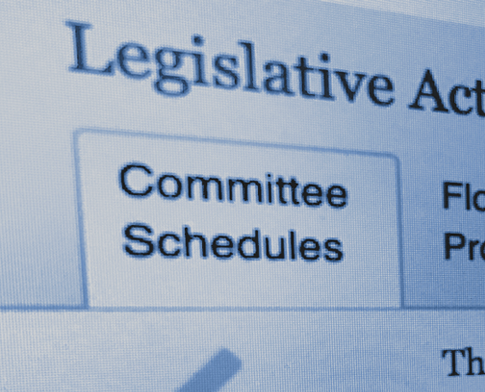Trade Update (July 22)
Trump Administration, Congressional Leaders Reach Spending Agreement
Congressional leaders and the Trump administration have reached an agreement on overall spending levels with a two-year deal to raise budget caps. Treasury Secretary Steve Mnuchin added on Thursday (July 18) that a two-year debt limit increase would be part of the deal as well. Still, hurdles remain in securing a deal. The talks are now focused on offsets sought by the Trump administration for spending increases, in addition to “structural issues,” Mnuchin said in an interview on CNBC’s “Squawk Box.“ Another senior administration official, speaking on background, said the Trump administration is seeking about $150 billion in offsets.[1] Mnuchin and House Speaker Nancy Pelosi (D-CA) have been racing to complete a deal before Congress leaves for its August recess. “The good news is we’ve reached an agreement between the administration, the House and the Senate on top line numbers for both year one and year two,” Mnuchin said, speaking from France, where he was at an economic summit. “We’re now discussing offsets as well as certain structural issues, and we’ve agreed as a part of that deal there would be a long-term two-year debt ceiling increase.” At issue are two separate but pressing items on Washington’s must-do agenda: increasing the debt limit to avert a first ever default on U.S. payments and acting to set overall spending limits and prevent automatic spending cuts from hitting the Pentagon and domestic agencies in January.[2] An agreement would also eliminate the possibility of a government shutdown when the current budget-year ends on September 30.
USMCA Latest
On Tuesday (July 16), nine Republican senators took to the floor to pressure House colleagues to bring the United States-Mexico-Canada-Agreement (USMCA) to a vote. Senator John Hoeven (R-SD) organized the measure and called for a vote this summer before Congress leaves for August recess, which is unlikely to happen. Lawmakers are hopeful they can pass the deal in the fall, as they’ve sought to avoid the possibility of it being overtaken by the 2020 presidential campaign. In the House, the nine Democrats tasked with negotiating with US Trade Representative (USTR) Robert Lighthizer met on Wednesday (July 17) to discuss the environmental concerns of the trade deal. Ways and Means Chairman Richard Neal (D-MA) said the discussions focused on concerns surrounding North American trade effects on the environment; the working group is set to meet with Lighthizer again next week. There, the group will discuss enforcement of the agreement, which Pelosi called the “overarching” issue that must be addressed before Democrats will consider the deal.[3] A congressional delegation led by Ways and Means Trade Subcommittee Chairman Earl Blumenauer (D-OR) was scheduled to meet Friday (July 19) with Medican President Andres Manuel Lopez Obrador to discuss the labor provisions.
US-Japan Trade Deal
The US and Japan are in “intense negotiations” regarding a mini-trade deal the two countries hope to reach before the United Nations General Assembly meeting in late September. “This would likely be a mini-deal,” involving just agricultural and automotive trade, said Tami Overby, Senior Director for Asia at McLarty Associates. But that also poses a risk for President Trump since there could be significant bipartisan opposition in Congress to a deal that leaves out other important manufacturing industries and the services sector, Overby said. It could also be subject to a challenge at the World Trade Organization for failing to cover substantially all trade, she added.[4] A deal focused exclusively on agriculture and autos would be a “lost opportunity” to address a number of other trade concerns, especially in the services sector, said Aiko Lane, executive director of the U.S.-Japan Business Council at the U.S. Chamber of Commerce. “We definitely are in favor of a high-standard, comprehensive trade agreement, which would be of the most benefit to both countries’ businesses,” Lane said. “We are really hoping that both sides don’t squander this opportunity for something that’s a bit short-sighted.” President Trump and Japanese President Shinzo Abe agreed the meeting would take place at the UN General Assembly after Trump threatened to impose 20 or 25 percent tariffs on Japanese and European Union (EU) auto imports. Trump then signed a presidential declaration in May that postponed the decision on tariffs until November to allow all sides more time to negotiate. The aforementioned auto tariffs remain Japan’s highest priority in the deal, while the US’ attention is more on the agricultural front.
Commerce Rules on Chinese Steel-Racks Antidumping Duty
On Friday (July 19), the US Department of Commerce announced the affirmative final determinations in the antidumping duty (AD) and countervailing duty (CVD) investigations of imports of steel racks and parts thereof from China. In a press release, Commerce found that exporters from China sold steel racks and parts at less than fair value in the US at rates from 18.06 to 144.50 percent. “The strict enforcement of U.S. trade law is a primary focus of the Trump Administration. Since the beginning of the current Administration, Commerce has initiated 172 new antidumping and countervailing duty investigations – this is a 219 percent increase from the comparable period in the previous administration,” the statement said. The US International Trade Commission (ITC) is currently scheduled to make its final injury determinations on or about September 3. If it makes affirmative final injury determinations, Commerce will issue AD or CVD orders. A fact sheet provided in the press release can be read here.
Lighthizer, Mnuchin Chat with Chinese Counterparts
Mnuchin and Lighthizer talked by phone on Thursday (July 18) with their Chinese counterparts for the second time in three weeks. “I wouldn’t say that that’s the sticking point in the trade negotiations,” Mnuchin said. “There are a lot of complicated issues. I think as I’ve said before, we have made a lot of progress. We’re trying to get back on the path to a lot of progress. And Ambassador and I are working closely on that plan.” Mnuchin, who has been in France for a G-7 finance ministers meeting, brushed off a Wall Street Journal report that said trade talks with China were stuck over the issue of how the Trump administration would address China’s demand that it ease restrictions on Huawei.[5] Mnuchin noted that he and Lighthizer could travel to Beijing for meetings if the call went well, but the details of such plans have yet to emerge.
References
[1] Emma, Caitlin. “Mnuchin says deal reached on overall spending levels.” Politico. 18 Jul 2019. https://www.politico.com/story/2019/07/18/budget-caps-debt-limit-increase-deal-1419206
[2] Taylor, Andrew. “Mnuchin: Negotiators agree on core elements of budget deal.” The Associated Press. 18 Jul 2019. https://www.apnews.com/4d6bdbb5f54043f0b65fe4df1a7f941f
[3] Cassella, Megan. “Democrats talk USMCA environmental standards with Lighthizer.” Politico Pro. 17 Jul 2019. https://subscriber.politicopro.com/article/2019/07/democrats-talk-usmca-environmental-standards-with-lighthizer-3598537
[4] Palmer, Doug. Behsudi, Adam. “US, Japan pushing for trade deal by late September.” 16 Jul 2019. https://subscriber.politicopro.com/article/2019/07/us-japan-pushing-for-trade-deal-by-late-september-1592870
[5] Palmer, Doug. “USTR confirms second US-China phone calls has occurred.” Politico Pro. 18 Jul 2019. https://subscriber.politicopro.com/article/2019/07/mnuchin-us-china-negotiators-to-talk-by-phone-today-1602556
HOUSE.GOV
The Week Ahead
For the main events of the next week and more, go straight to the key events on the house.gov website.
SENATE.GOV
The Week Ahead
For the main events of the next week and more, go straight to the key events on the senate.gov website.


